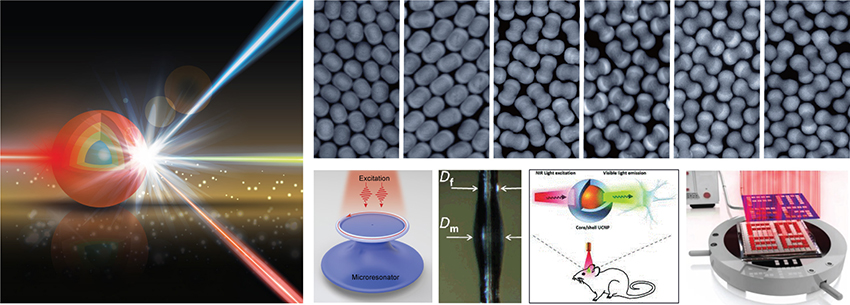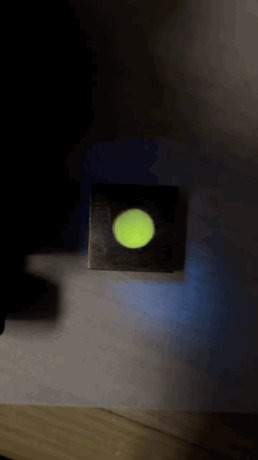Our research focuses on the design and synthesis of doped optical materials for biomedical and photonic applications. We develop chemical methods for synthesizing new nanocrystals, microcrystals, and nanocomposites. Experimental characterizations by microscopy and spectroscopy techniques coupled with theoretical simulation are used to understand the materials growth processes and luminescence mechanisms.
1. Nanoparticles and nanosynthesis
We rationally assemble atoms/ions at the nanometer length scale towards ''Lab on a Particle'' architectures for better understanding and control of ionic interactions. By taking advantage of the shape, chemical composition, and structural complexity and anisotropy, one can fine-tune the properties of the materials to meet specific needs in technological applications.

Research article: Nature 2010, 463, 1061; Nature Mater. 2011, 10, 968; Nature Protoc. 2014, 9, 1634; Nature Commun. 2022, 13, 1032; Nature Commun. 2019, 10, 1811; Nature Commun. 2016, 7, 10304; J. Am. Chem. Soc. 2012, 134, 20849; J. Am. Chem. Soc. 2008, 130, 5642; Angew. Chem. Int. Ed. 2017, 56, 10383; Angew. Chem. Int. Ed. 2015, 54, 12788; Angew. Chem. Int. Ed. 2013, 52, 13419; Angew. Chem. Int. Ed. 2010, 49, 7456; Angew. Chem. Int. Ed. 2008, 47, 906; Adv. Mater. 2018, 30, 1803563.
Review paper: Chem. Rev. 2022, 122, 5519; Chem. Soc. Rev. 2023, 52, 8374; Chem. Soc. Rev. 2015, 44, 1318; Chem. Soc. Rev. 2009, 38, 976; Acc. Chem. Res. 2020, 53, 358; Acc. Chem. Res. 2014, 47, 1378; Trends Chem. 2020, 2, 427; Adv. Mater. 2020, 32, 2004142; Adv. Drug Deliv. Rev. 2022, 188, 114457.
2. Stimuli-responsive phosphors
We explore new compositions and structures to tune dopant luminescence response to external stimuli, such as temperature, humidity, mechanical stress, and excitation conditions. We also develop materials for directly converting mechanical action into optical emissions. By rational design of stimulus-responsive properties, we expand the applications of luminescent materials in sensing and information security.
 |
 |
 |
Research article: J. Am. Chem. Soc. 2022, 144, 22295; J. Am. Chem. Soc. 2021, 143, 17599; Angew. Chem. Int. Ed. 2019, 58, 17255; Adv. Funct. Mater. 2021, 31, 2006357; Adv. Mater. 2020, 32, 1907747; Adv. Mater. 2019, 31, 1807062; Adv. Opt. Mater. 2019, 7, 1900336.
Review paper: Acc. Mater. Res. 2021, 2, 364; Trends Chem. 2022, 4, 726; Mater. Today Phys. 2021, 21, 100520.
3. Electroluminescent materials and devices
We develop photoluminescent and electroluminescent materials for lighting and display applications. We fabricate phosphor-converted LEDs as light sources for illumination and non-destructive detection. We also construct flexible electroluminescent devices driven by an alternating current.

Research article: ACS Mater. Lett. 2022, 4, 2447; Laser Photonics Rev. 2022, 16, 2200012.
Review paper: APL Mater. 2021, 9, 030701.